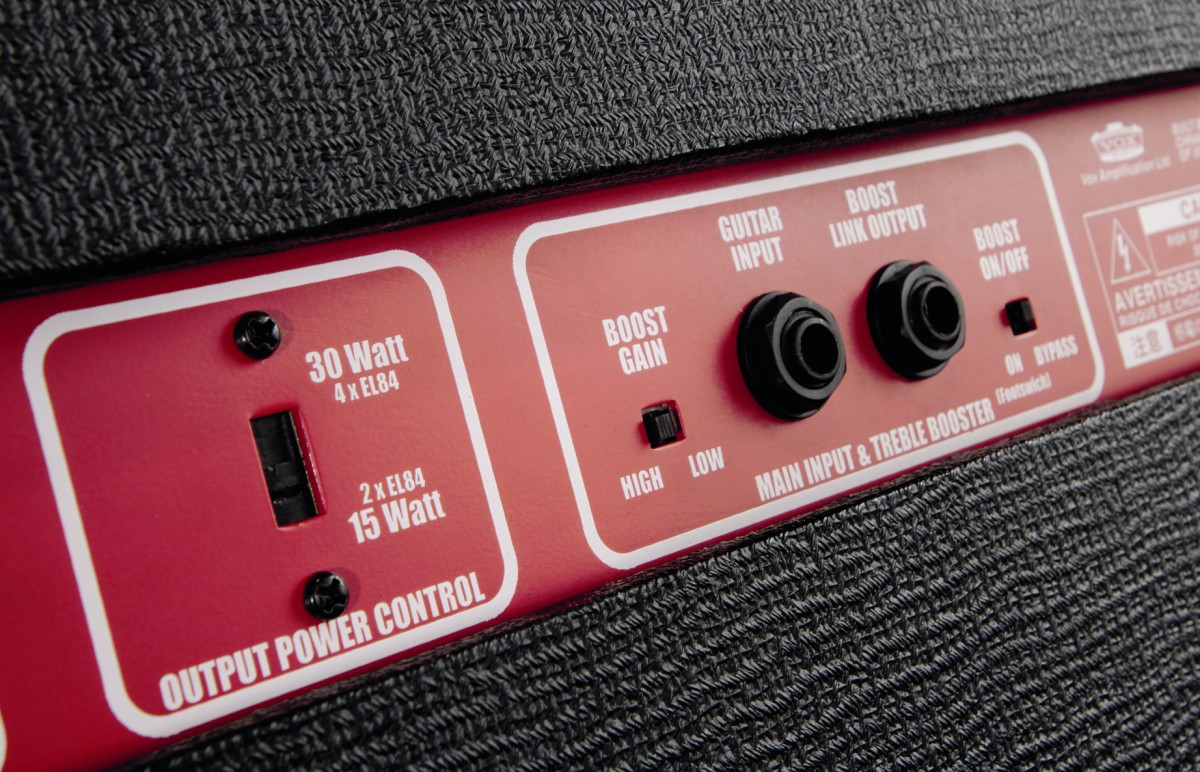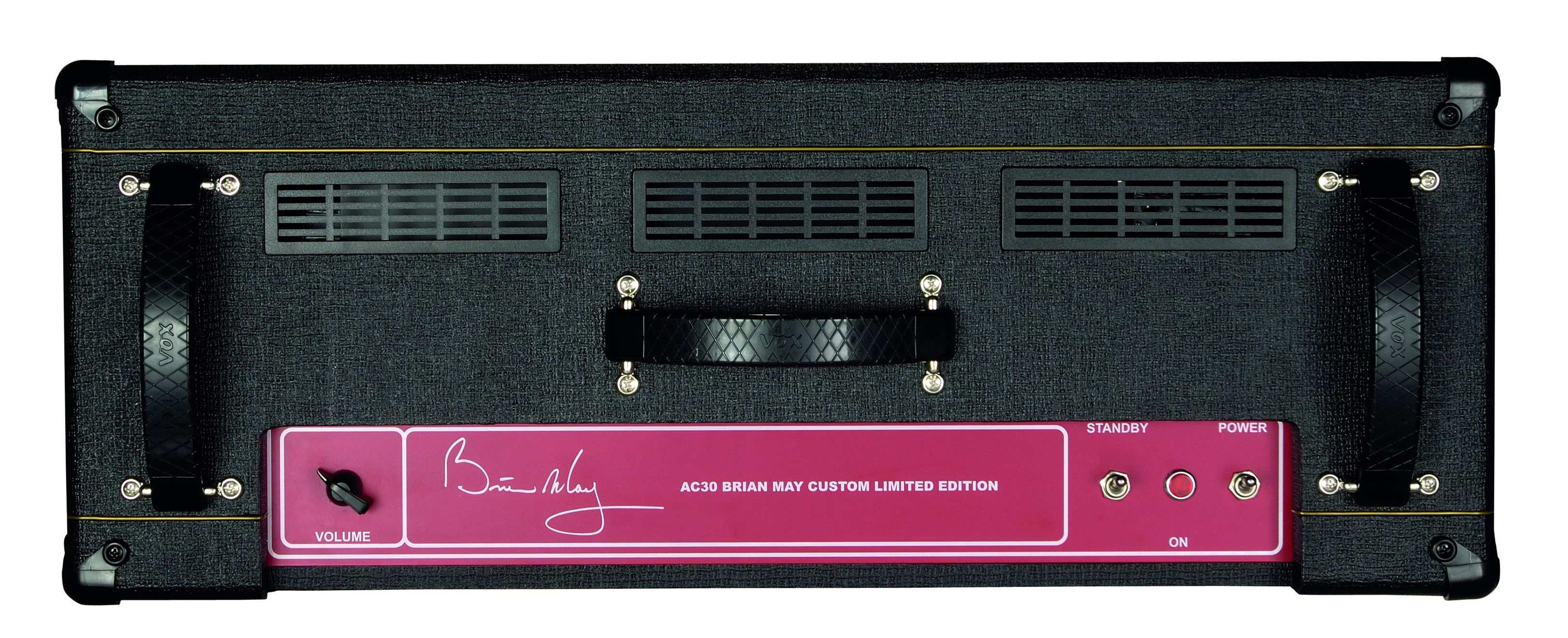MusicRadar Verdict
There's no doubt that when used faithfully, this amp offers a tone of wonder. However, if you have to turn it down there's really no reason to get this amp. If you imagine you'll be constantly reaching for this amp's volume pot and thus compromising your tone, we suggest opting for the AC30CC.
Pros
- +
Authentic tone. Ultra-simple design.
Cons
- -
It's very, very loud.
MusicRadar's got your back



You'd be hard pushed to come up with a more notable name who has used a simple all-tube design to forge a unique signature tone than Brian May, and May himself was involved in this new signature AC30 amp's R&D from day one. This unit also remains faithful to Dave Petersen's designs, the man who has been modding and revamping Brian's own AC30s for many years.
The differences from a standard AC30
From a front view this amp would melt unnoticed into a stack of standard AC30s; the classic brown diamond cloth, gold logo and slightly squat appearance have been left unadulterated by a signature or other paraphernalia.
However, you realise that this is something different when you first glimpse the control panel. Gone are the numerous inputs and rows of chicken-head knobs to be replaced by a candy-red panel and a single volume control.
The iconic Top Boost AC30 and most other standard AC30s offered either two or three independent channels. However, this AC30 mimics customisations May has carried out on his own amps for years: removing the valves and guts from all but the normal channel and using just that at full volume.
Of course, a remote treble booster is a vital part of his sound too, and Vox has included an internal boost circuit that can be switched in and out via the included footswitch. This isn't the same as a simple overdrive pedal, but a design that adds to the basic signal - around 46dB in this case - which is a significant hike in level to say the least.
What's more, the circuit has both high and low gain settings which can be chosen via a slider switch on the back panel, and there's also an output for use when linking a number of AC30s.
Want all the hottest music and gear news, reviews, deals, features and more, direct to your inbox? Sign up here.
One thoughtful feature here is the provision of a rear-sited guitar input. Hopefully, we've saved you 10 minutes of searching (complete with the amp upside down in our case) and, if you were to have nine of these amps in a stack (the so-called wall of death), you'd be grateful for such an innovation.
Probably the most important feature of all is the output power control switch, which allows you to drop the overall output by half to 15 watts. This isn't a new feature but Vox is keen to point out that as well as removing two of the four EL84 power valves, the circuit also alters the bias and the output transformer's impedance.
The result is that you get the exact same tonal operation whether set to 30 or 15 watts, something that you'll be thankful for. Because this is one loud amp, and that's putting it mildly.
In use
Even dropping the output by 15db doesn't do much to stop everything in the room rattling. Thanks to the ultra-efficient design and clean output, the sound here can assault you like a blunt instrument. Strapping on our Maxima-strung Burns BM signature the tone we immediately obtain is nothing short of magnificent.
With the boost kicked in and set to high gain, the classic Queen rock tone is there and if you have any Brian May whatsoever in your technique, you'll be able to mimic at least his sound with efficiency. Take the boost out and lower the guitar volume and the tone cleans up whilst remaining fully fat and inspirational.
It's worth mentioning that what Brian calls his own 'signature tone', the crackle and buzz of dirty mains, is well and truly part of the mix too and unless you have your own personal electricity supply, you'll notice this before even playing a note.
Using other guitars, specifically a humbucker-loaded Schecter S-1 30th Anniversary, we still get close to the May tone. With the guitar volume reduced and using a Mexican Standard Fender Strat, a classic sixties tone is quickly apparent too.
However the amplifier doesn't sound any more convincing than when on full whack and maximum boost with our Burns BM; it needs that final push courtesy of two pickups together, in phase and in series, to really shine.
So, given that you really shouldn't lower the output if May's tone is your goal because you lose just too much of the harmonics and articulation, we have to say that the sheer volume - even at 15-watts - is likely to prove impractical for many. You may find that a power attenuator is the only real option in all but the biggest of venues.
This is probably the truest recreation of May's own amps you're likely to get, and it's probably the simplest professional amp we've ever encountered too.
The down side is that this amp is unlikely to appeal to any but the staunchest of May fans and we'd suggest that anyone concerned by the high output should seriously consider their buying choice. The AC30CC, for example, is an excellent reworking of the classic design and is infinitely more controllable; it does a decent May too (with the right guitar and booster in the chain).
MusicRadar is the number 1 website for music makers of all kinds, be they guitarists, drummers, keyboard players, djs or producers...
GEAR: We help musicians find the best gear with top-ranking gear round-ups and high- quality, authoritative reviews by a wide team of highly experienced experts.
TIPS: We also provide tuition, from bite-sized tips to advanced work-outs and guidance from recognised musicians and stars.
STARS: We talk to musicians and stars about their creative processes, and the nuts and bolts of their gear and technique. We give fans an insight into the actual craft of music making that no other music website can.
